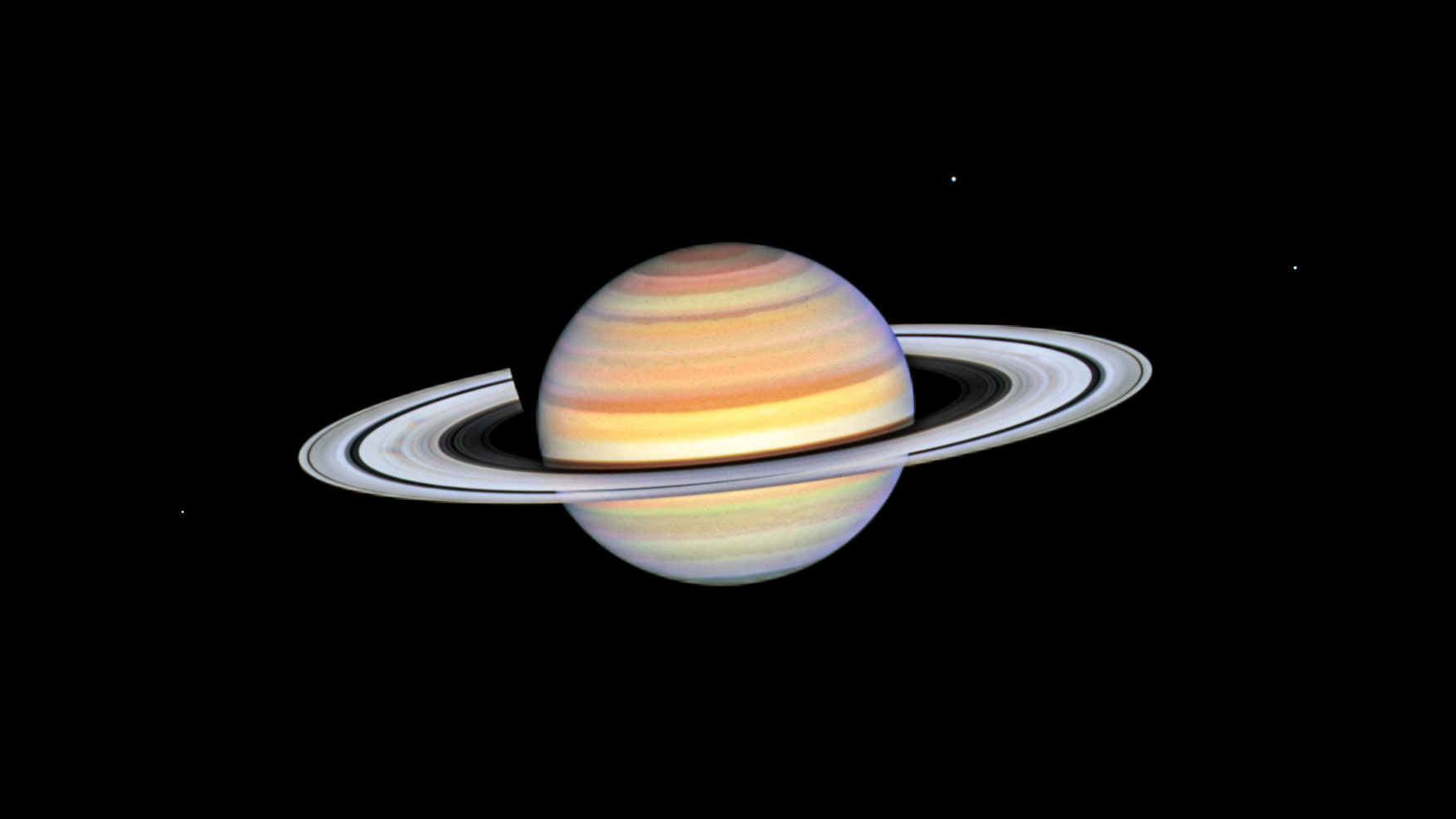5 min read
The most recent spacecraft telemetry was acquired on Nov. 29 from the Deep Space Network tracking complex at Goldstone, California. The Cassini spacecraft is in an excellent state of health and with the exception of the CAPS instrument being powered off, all subsystems are operating normally. Information on the present position and speed of the Cassini spacecraft may be found on the "Present Position" page at: http://saturn.jpl.nasa.gov/mission/presentposition/.
Wednesday, Nov. 23 (DOY 327)
Orbit Trim Maneuver (OTM) #300 was performed today. This was the periapsis maneuver setting up for the Titan 79 encounter on Dec. 13. The main engine burn began at 10:45 PM PST. Telemetry immediately after the maneuver showed a burn duration of 17.175 seconds, giving a delta-V of 2.969 m/s. While the maneuver targets to T79, the next encounter is actually a 100 km flyby of Dione (D3), taking place one day before the T79 encounter. Additional effort is required to make sure T79 should be targeted rather than D3, since not both can be independently targeted, and to make sure the resulting untargeted flyby is still safe. All subsystems reported nominal performance after the maneuver.
Today the backup Sun Sensor Assembly (SSA B) was powered on in preparation for tomorrow's dust crossing; it will be turned off via real time command (RTC) on DOY 331.
A non-targeted flyby of Helene occurred today.
Thursday, Nov. 24 (DOY 328)
This week, while the spacecraft was near periapsis, science observations began with the Imaging Science (ISS ) and other optical remote sensing instruments monitoring clouds in Titan's atmosphere from a range of 2.1 million kilometers. The Ultraviolet Imaging Spectrograph (UVIS), ISS and the Visual and Infrared Mapping Spectrometer (VIMS) observed Saturn's auroral oval for 10 hours. Around periapsis, the Cosmic Dust Analyzer (CDA) made measurements of the dust environment during the ring plane crossing. UVIS then performed a 3 hour calibration using the star Spica. The Composite Infrared Spectrometer (CIRS), ISS, and VIMS completed an 18 hour observation of the faint ring arcs at low elevation and low phase, followed by a 14.5 hour light-curve observation of the outer irregular moon Thrymr performed by ISS and VIMS. CIRS, ISS and VIMS later performed a 15.5 hour Titan composition observation, and CDA made a 13 hour interstellar dust observation. Concluding the week, ISS observed a set of some of Saturn's small inner moons, including Epimetheus and Methone.
Non-targeted flybys of Enceladus, Epimetheus, and Titan occurred today.
Friday, Nov. 25 (DOY 329)
The main engine cover was closed yesterday prior to the dust crossing for dust hazard avoidance and was opened today. This was the 69th in-flight cycle of the cover.
Saturday, Nov. 26 (DOY 330)
OTM-300A and OTM-301, both statistical maneuvers targeting to T79, are scheduled to execute on December 1 and 9 respectively. After the post OTM-300 orbit determination solution is available, one of these maneuvers will likely end up with a deterministic component.
Sunday, Nov. 27 (DOY 331)
A non-targeted encounter of Titan occurred today.
Monday, Nov. 28 (DOY 332)
The CDA – High Rate Detector (HRD) recovery command file was uplinked today over Goldstone's DSS-14 station and is due to execute on the spacecraft on 2011-334T15:30. This is in response to two separate recent incidents. The HRD instrument stopped generating data after 2011-310T23:26; this is currently under investigation. The CDA instrument also underwent a known anomaly on DOY 2011-327T21:59 when a checksum showed an error. The spacecraft was in the E-ring at the time and the CDA instrument has seen this occur there before. A reset/reload activity is needed to get CDA back into a normal operating state. Execution of the command going up on DOY 334/335 includes reset/reload, HRD calibration, and other tests. Once the results are on the ground, additional real time commanding will ensure proper functioning of the instrument for the upcoming Dione flyby on Dec. 12.
An insider's feature story called "Dr. Jean-Pierre Lebreton, Huygens, and a Salute to the Mars Science Laboratory" is available on the Cassini web site. It describes an interview with Jean-Pierre Lebreton, the European Space Agency (ESA) Project Scientist for the Huygens mission, just as he retired from a decades-long career with ESA. Though he remains active in research, Dr. Lebreton's departure from ESA is a noteworthy milestone, and this article also honors his many contributions to space science in general and Cassini-Huygens in particular. For images and more information on this subject, link to:
http://saturn.jpl.nasa.gov/news/cassiniinsider/insider20111128/.
Tuesday, Nov. 29 (DOY 333)
The most recent Cassini-Huygens Analysis and Results of the Mission (CHARM) teleconference was held today. The topic: "Powerhouses to PacPeople: An update on the recent discoveries by Cassini/CIRS on the nature of the Saturnian satellite surfaces."
A PDF of the presentation package is available at:
http://saturn.jpl.nasa.gov/video/products/MultimediaProductsCharm/. An audio recording of the presentation was made and will be linked to the same location within a few days.
In June, the decision to turn off the Cassini Plasma Spectrometer (CAPS) was made as a precautionary measure in light of shifting spacecraft bus voltages attributed to malfunctions in the instrument. An analysis of this situation has been initiated at the NASA Engineering and Safety Center (NESC), with a report expected in January 2012. The final decision regarding whether or not to turn the instrument back on will be made some time after the release of this report.
Preliminary Sequence Integration and Validation (PSIV) Spacecraft Activity Sequence File (SASF) products were due today as part of the S72 Sequence Implementation Process (SIP).







